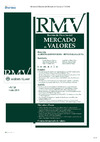Identificador persistente para citar o vincular este elemento:
https://accedacris.ulpgc.es/jspui/handle/10553/73129
| Título: | La información precontractual a través del Documento de Datos Fundamentales (KID) ¿Se acomoda a nuestra Era Digital? | Autores/as: | Estupiñán Cáceres, Rosalía Isabel Fonticiella Hernández, Beatriz |
Clasificación UNESCO: | 560503 Derecho mercantil | Palabras clave: | Deber de información Protección de inversores minoristas Era digital Inversores minoristas Consumidor, et al. |
Fecha de publicación: | 2019 | Proyectos: | Desafíos del mercado Financiero digital: riesgos para la Administración y los inversores (Ref. MCIU/AEI/FEDER, UE RTI 2018-098963-B-100) | Publicación seriada: | Revista de derecho del mercado de valores | Resumen: | Este trabajo tiene por objeto analizar si la información precontractual que la normativa de la UE exige proporcionar a los inversores minoristas, se acomoda a los tiempos de la digitalización. Y es que en estos tiempos se ha producido un cambio en la forma de enfrentar y abordar la información, según percibimos y, además, avala la neurociencia. Se trata de un fenómeno que se advierte, no sólo en las generaciones que han nacido con internet, sino también en las precedentes. Abordamos este trabajo, por tanto, con una mirada crítica que facilite una toma de conciencia, una reflexión sobre la necesidad que tiene siempre el entorno jurídico, si no de adelantarse, al menos de adaptarse a su realidad. En esta nueva era digitalizada, partiendo de la constatación de la preferencia natural humana por lo sencillo, los individuos en general, los inversores en particular, para informarnos y comprender el producto financiero, sus riesgos, etc., nos inclinamos por una explicación clara, breve y simple, con lenguaje no técnico y preferiblemente en un soporte visual o mixto, como un vídeo, a la lectura. Se nos puede objetar que la defensa de este enfoque nos convertirá en personas más simples, por cuanto la tarea intelectual que realizamos al ver y escuchar un vídeo es menor que la ejercida con la lectura, pero la senda digital que transitamos, como advertimos también en nuestras aulas, resulta irreversible, quizás porque tal «simplicidad» pueda y deba venir contrarrestada por otras nuevas habilidades y por una floreciente inteligencia artificial (IA). En cualquier caso, y como acontece siempre, se trata de hacer un balance justo entre los intereses de todas las partes, el del inversor a comprender lo esencial del producto financiero en el que invertir, el del empresario que emite y/o comercializa tal instrumento a darlo a conocer sin omitir lo esencial, y, en suma, el propio interés público superior en buscar defender todos los intereses, poniendo de esta manera coto y mitigando la conflictividad en el sector financiero en aras al correcto funcionamiento del mercado. Constatamos cómo la normativa europea, en el específico tema que tratamos, esto es, el Reglamento (UE) 1286/2014, implica un importante avance en presentar un mayor acomodo a la era digital, pero parece que aún se ha quedado corta al no haber tenido en consideración esta realidad en toda su dimensión. This paper aims to analyse whether the pre-contractual information that EU law requires to be provided to retail investors fits the times of digitisation. In these times, there has been a change in the way we face and deal with information, as we perceive and also supports neuroscience. It is a phenomenon that can be seen not only in generations born with the Internet, but also in previous generations. Therefore, we approach this work with a critical eye that facilitates an awareness, a reflection on the need that the legal environment always has, if not to anticipate at least to adapt to its reality. In this new digital era, we have to take into account the natural preference of humans for simplicity, and in this context, individuals in general and investors in particular, prefer, before reading, to inform ourselves and understand a financial product and its risks, etc., a clear, brief, and simple explanation in non-technical language, and preferably in a visual or mixed medium, such as a video. It may be objected that the defence of this approach will make us simpler people, since the intellectual task we perform when watching and listening to a video is less than reading, but the digital path we travel, as we also warn in our classrooms, is irreversible, perhaps because such «simplicity» can and should be counteracted by other new skills and by a flourishing artificial intelligence (AI). In any case, as always, it is a matter of making a fair balance between the interests of all parties. On the one hand, investors to understand the essence of the financial product in which to invest, on the other, entrepreneurs who issue and/or market an instrument to make it known without omitting the essential; and, in short, the public interest itself superior in seeking to defend all interests. And thus, mitigate the conflict in the financial sector investor, getting the proper functioning of the market. We can see how the European regulations in the specific subject we are dealing with, that is, Regulation (EU) 1286/2014, implies an important advance in presenting a greater accommodation to the digital era, but it seems that it has still fallen short because it has not taken into consideration this reality in all its dimension |
URI: | https://accedacris.ulpgc.es/handle/10553/73129 | ISSN: | 1888-4113 | Fuente: | Revista de derecho del mercado de valores [ISSN 1888-4113], n. 25, p. 11 |
| Colección: | Artículos |
Visitas
141
actualizado el 21-dic-2024
Descargas
279
actualizado el 21-dic-2024
Google ScholarTM
Verifica
Comparte
Exporta metadatos
Los elementos en ULPGC accedaCRIS están protegidos por derechos de autor con todos los derechos reservados, a menos que se indique lo contrario.
